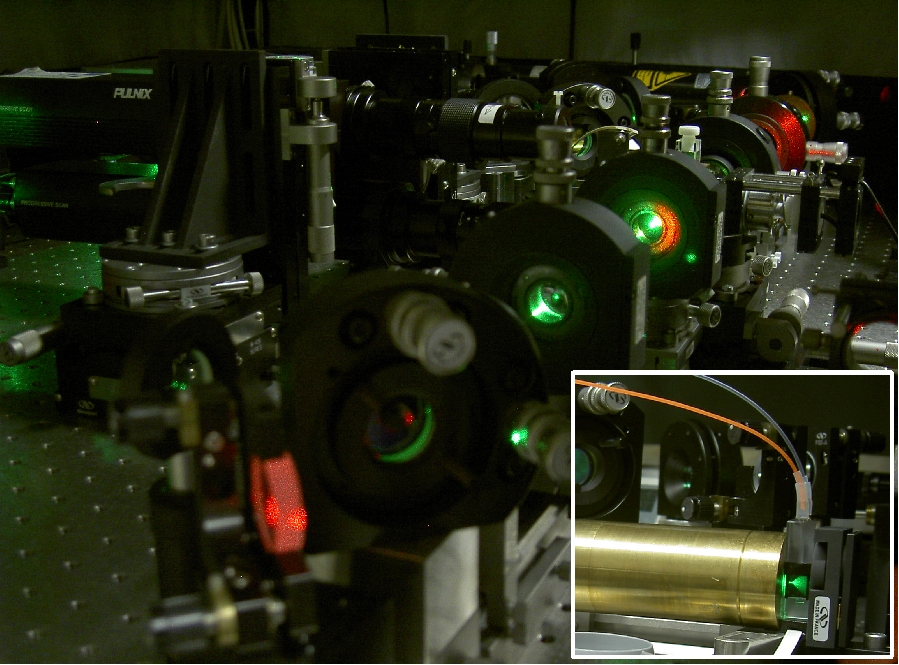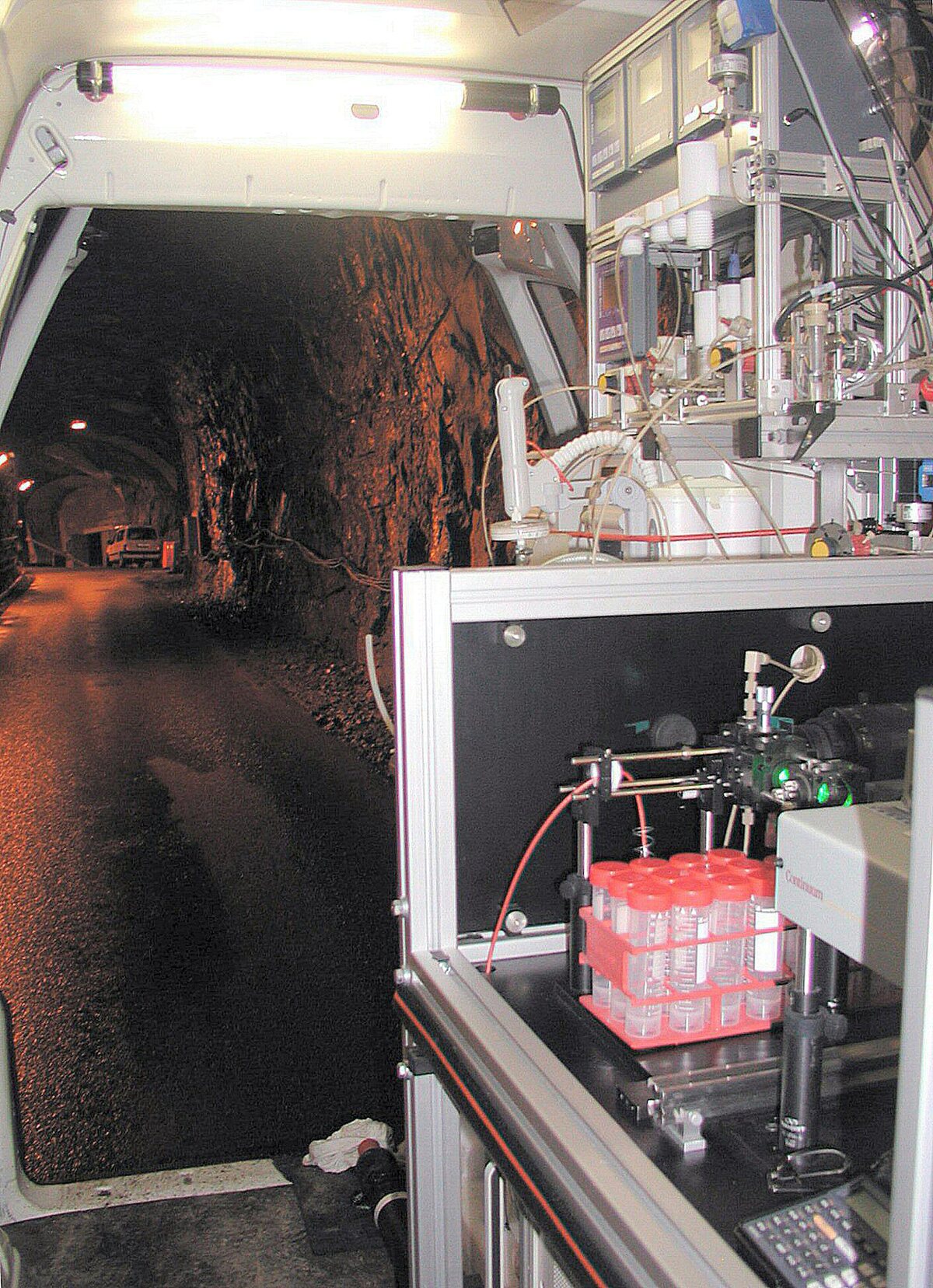Laser-Induced Breakdown-Detection (LIBD)
The Laser-Induced Breakdown-Detection (LIBD) has been developed for the direct, highly sensitive quantification of nanoparticles in liquids (aquatic colloids). Compared to methods based on light scattering LIBD is several orders of magnitude more sensitive especially for particles < 100 nm (Limit of detection ca. 10.000 part/ml).
The method is based on the generation of a dielectric breakdown (plasma generation) in the focus of a pulsed high-energy laser beam. As the intensity-threshold for a breakdown ignition is lower in the solid-state than in liquids, breakdown events can be initiated by particles in the focal region at suitable laser pulse-energy. This plasma-emission and the succeeding pressure-wave are detected with a computer-based image-detection system or a photoacoustic sensor, respectively. Using a calibration obtained from monodisperse reference spheres, mean size and concentration of colloids are derived. By use of the acoustic detection also the size distribution between 15 nm and 1000 nm can be measured.
Applications of LIBD are twofold: (A) The first are investigations of true colloids, i.e in the present case colloids composed of radionuclides. Formation, stability and aggregation behavior of zirconium, thorium, plutonium and curium colloids are examined in order to obtain thermodynamic solubility data, highly relevant for the assessment of chemical reactions in the near field of a repository.
(B) Pseudocolloids, i.e. radionucludes attached to colloids of natural origin may lead to unwanted colloid mediated radionuclide migration. For the geochemical characterization of groundwater under in-situ conditions a mobile LIBD instrumentation is used. Investigations are performed under real disposal conditions with an optical detection cell designed for hydrostatic pressures up to 50 bar.
Contact:
+49 721 608 29333


